28 Most Interesting Towns in England You Need to Visit
Looking to escape the hustle and bustle of the city? Here are 28 of the most interesting towns in England, complete with history, countryside vistas and lovely locals.
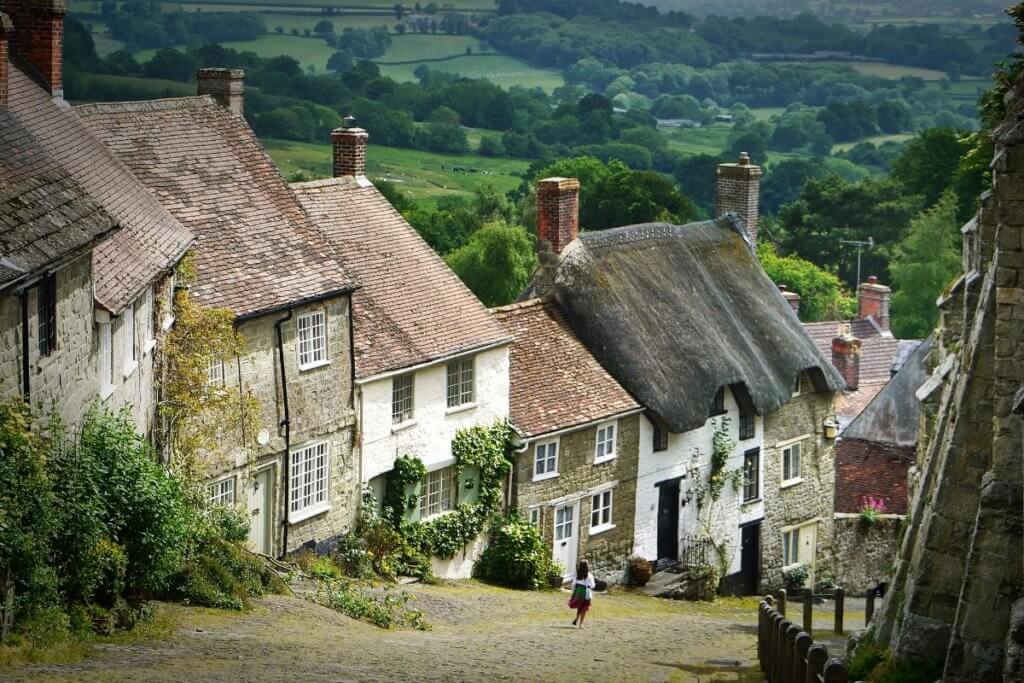
England has no shortage of fascinating towns nestled amid beaches, neat forests, rugged cliffs, moorland, rivers and rolling green hills. From former maritime hubs to quaint civil parishes, many countryside settlements have played a key role in shaping the nation’s history.
Castles, museums, delicious cuisine and nature all combine to make England’s most interesting towns more than worth a visit. Here are 28 towns that deserve a place on your bucket list.
What to See in the Most Interesting Towns in England
England’s towns make for some great days out, here are just a few of the tops towns to visit in our beautiful country.
1. Cheltenham, Gloucestershire
Located on the western edge of the Cotswolds in Gloucestershire, Cheltenham is a Regency spa town known throughout England for its annual literature and horseracing events. The town is home to a combination of modern and traditional architecture, delicious gastronomy, shopping centres, theatres, and manicured parks endowed with green rolling hills.
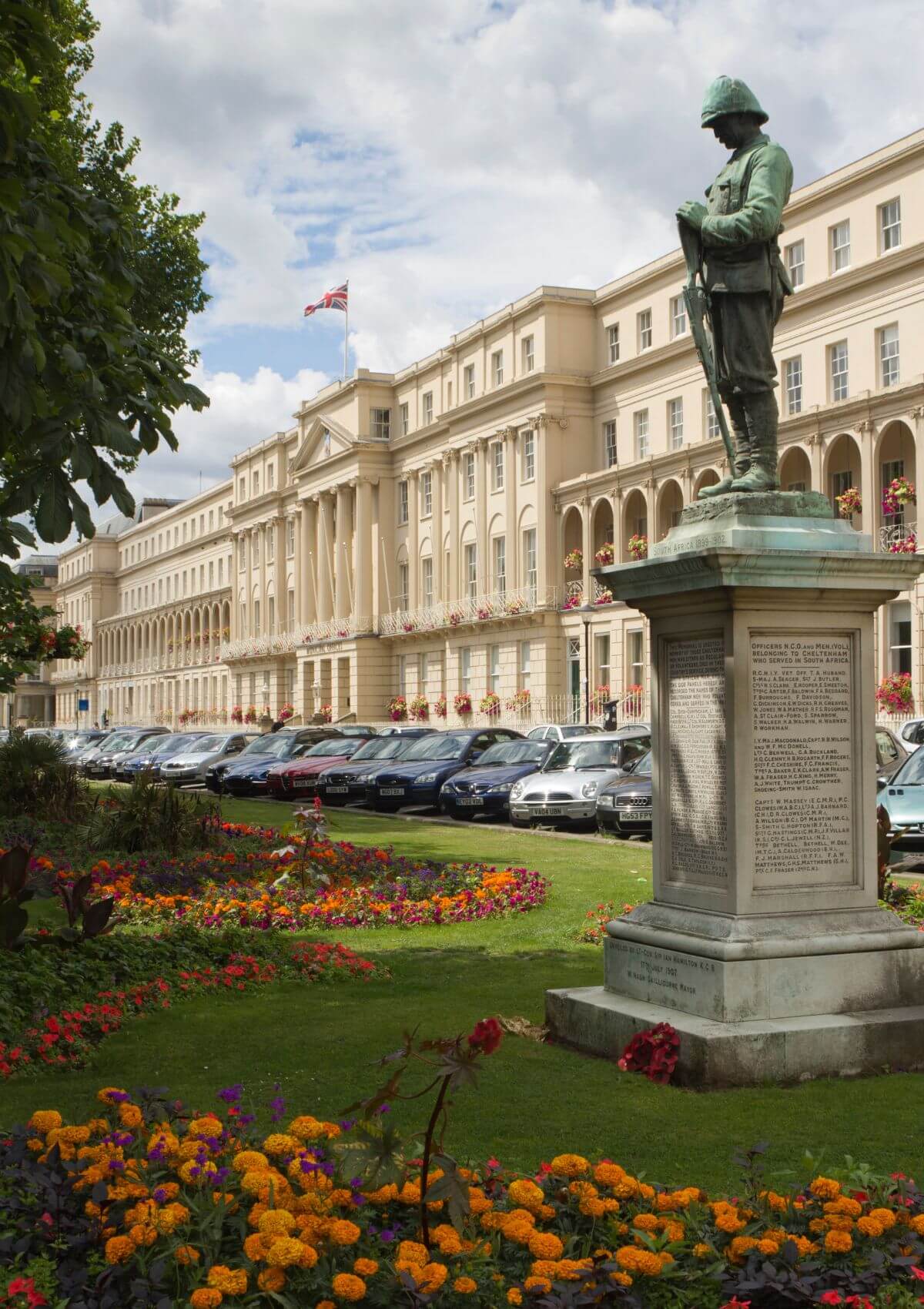
Of all the amazing things to do in Cheltenham for families, taking a dip in the heated pool at Sanford Parks Lido has to be near the top of the list. You can also visit Malmaison Cheltenham, a whitewashed Regency villa in the stylish Montpellier district.
When you’re feeling peckish, head to the Daffodil restaurant, which is an art deco brasserie that serves a seasonal menu of modern British delights.
2. Bakewell, Derbyshire
Located on the banks of the River Wye, Bakewell is one of the prettiest towns in England and a popular jumping off point for hikers visiting the Peak District. The town itself is characterised by mellow stone buildings, quaint courtyards and scenic walking trails. It’s also the birthplace of the famous – and delicious – Bakewell Tart.
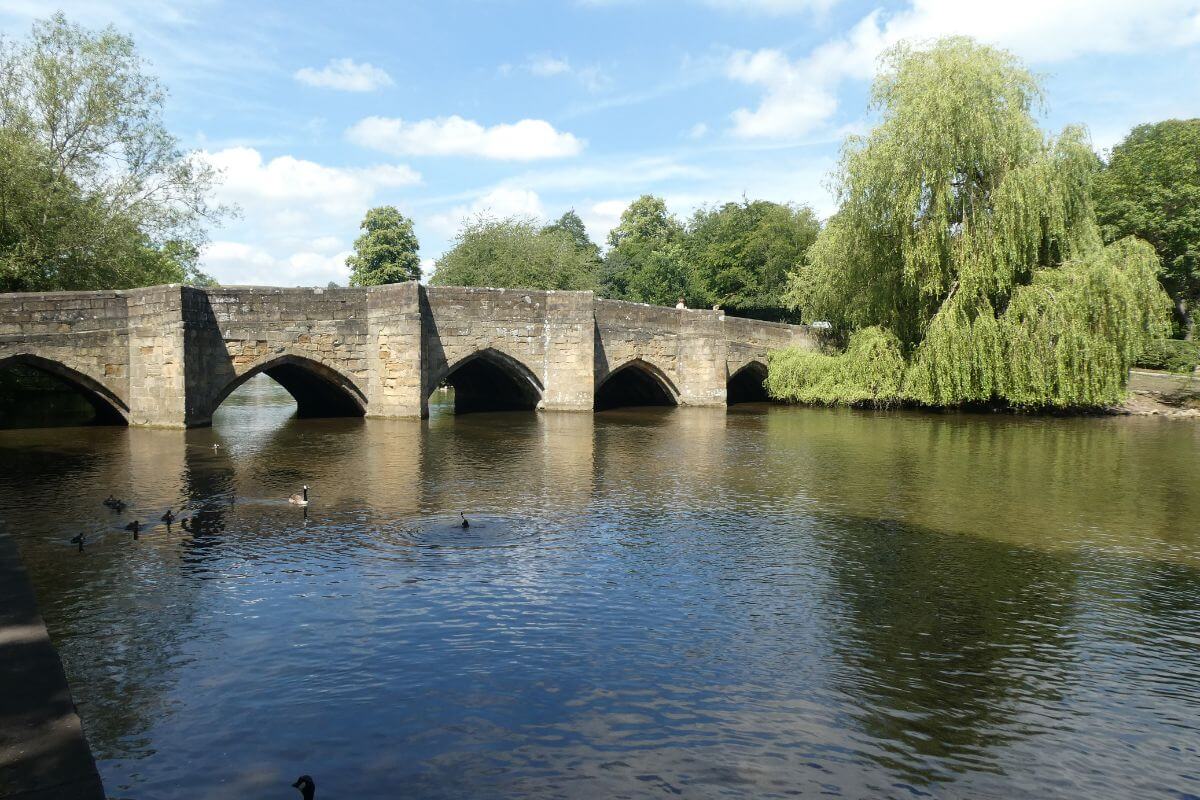
Some of the best things to see in Bakewell include architectural gems like Chatsworth House, Haddon Hall, All Saints Church and Bakewell Bridge. If you prefer manicured greenspaces, visit the Bath Gardens or Thornbridge Hall. For countryside vistas, follow the Monsal Trail into the Peak District – one of England’s most popular National Parks.
When you need a break from walking, you’ll find plenty of cafés and shops lining the town’s streets. You can learn about the town’s heritage and local life at the Bakewell Old House Museum. If visiting on a Monday, browse the delicacies and budget-friendly goods on offer at the outdoor market.
3. Alnwick, Northumberland
Alnwick is the traditional county town of Northumberland, home to historical landmarks that include a castle, a central marketplace and a multi-purpose playhouse. With popular activities such as cycling, fishing and walking, the English countryside town of Alnwick has plenty on offer for outdoor enthusiasts.
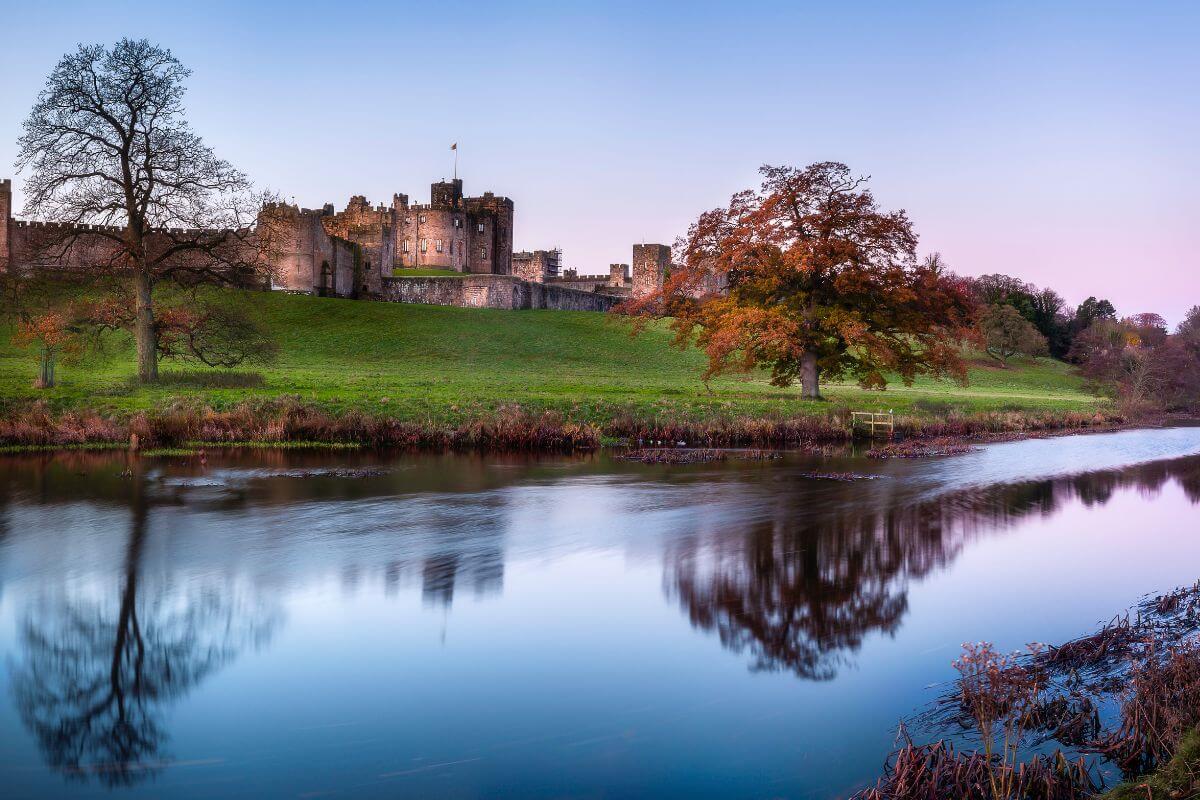
Today, Alnwick is perhaps best known for Alnwick Castle, which was used as a filming location for Harry Potter and Downtown Abbey. Surrounding the 11th-century castle are attractions such as Hulne Park, the Alnwick Castle Golf Club and the Alnwick Garden.
You’ll find local produce and arts and crafts displayed on market stalls every Thursday and Saturday in Alnwick’s historic Market Square. The streets adjacent to the market host shops such as Barter Books plus restaurants including The Treehouse Restaurant and The White Swan Hotel.
4. Ipswich, Suffolk
Set on the River Orwell in Suffolk, the maritime English town of Ipswich is home to cafés, galleries, shops and parks that line the waterfront. Attractions such as the Ipswich Museum give a nod to the town’s heritage as a maritime centre, while local and international restaurants celebrate the town’s modern status as hub for foodies.

In addition to the Ipswich Waterfront, the town’s most interesting attractions include Grade I listed buildings like the 15th-century Ancient House, the Tudor-era Christchurch Mansion and the church of St Mary-le-Tower.
For a spot of culture, catch a show at the New Wolsey Theatre or the Ipswich Regent Theatre. Petrol heads might enjoy a visit to the Ipswich Transport Museum, while nature lovers may prefer a stroll through Holywells Park or the nearby Jimmy’s Farm & Wildlife Park. It makes for a great day out in Suffolk.
5. Barnstaple, Devon
The river port town of Barnstaple in Devon is best known for the Barnstaple Pannier Market, where a host of antiques, crafts and local delicacies are showcased every Tuesday to Saturday. But with National Park trails, historical landmarks, gardens and superb restaurants, Barnstaple caters to more than just bargain hunters.
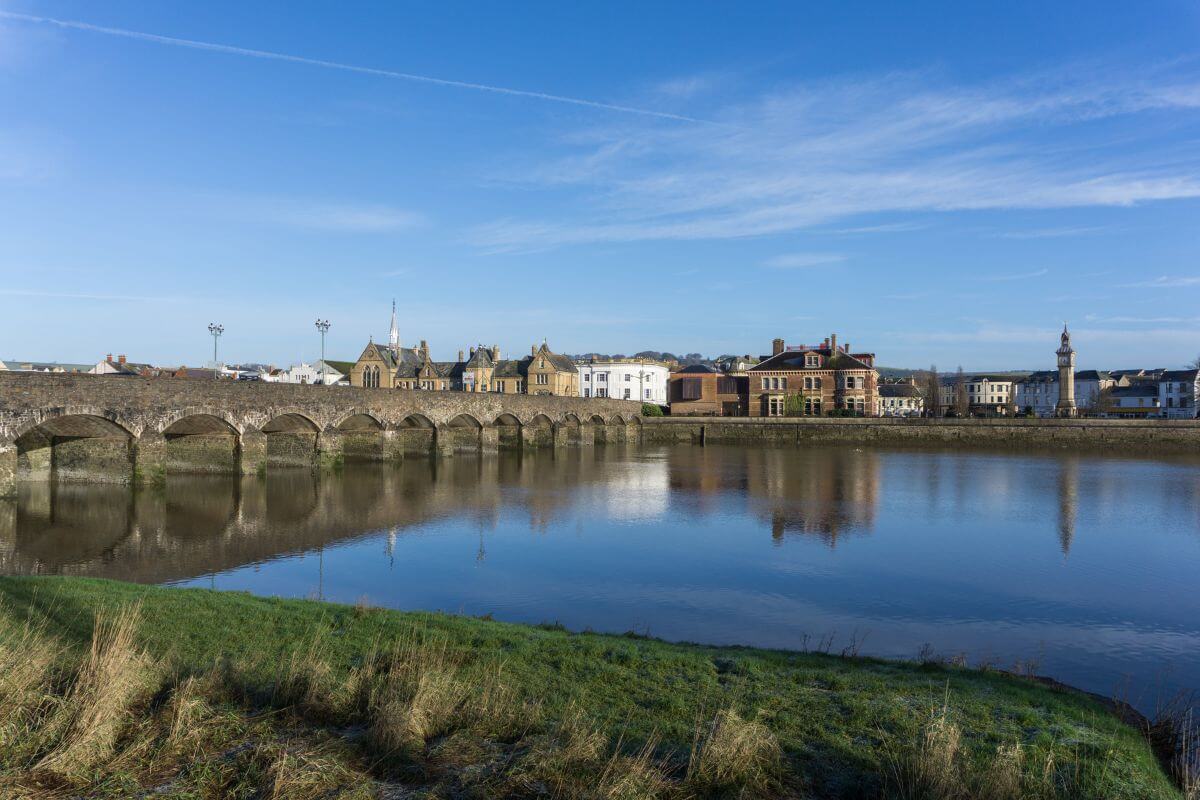
History buffs come to Barnstaple to check out attractions such as Barnstaple Castle, Watermouth Castle and the medieval Barnstaple Long Bridge. Other places to visit in Barnstaple include the Broomhill Estate, RHS Garden Rosemoor and the nearby privately owned harbour village of Clovelly – one of the prettiest villages in Devon.
Follow the scenic Tarka Trail for an adventure through the Exmoor National Park. After a day of hiking one of the best English towns in Devon, you can order delicious meals from restaurants such as The Barnstaple Hotel, The Royal and Fortescue Hotel, and The Park Hotel.
6. Bodmin, Cornwall
Home to winding countryside trails, heritage museums and a selection of National Trust properties, Bodmin in Cornwall appeals as much to history buffs as it does hiking enthusiasts.
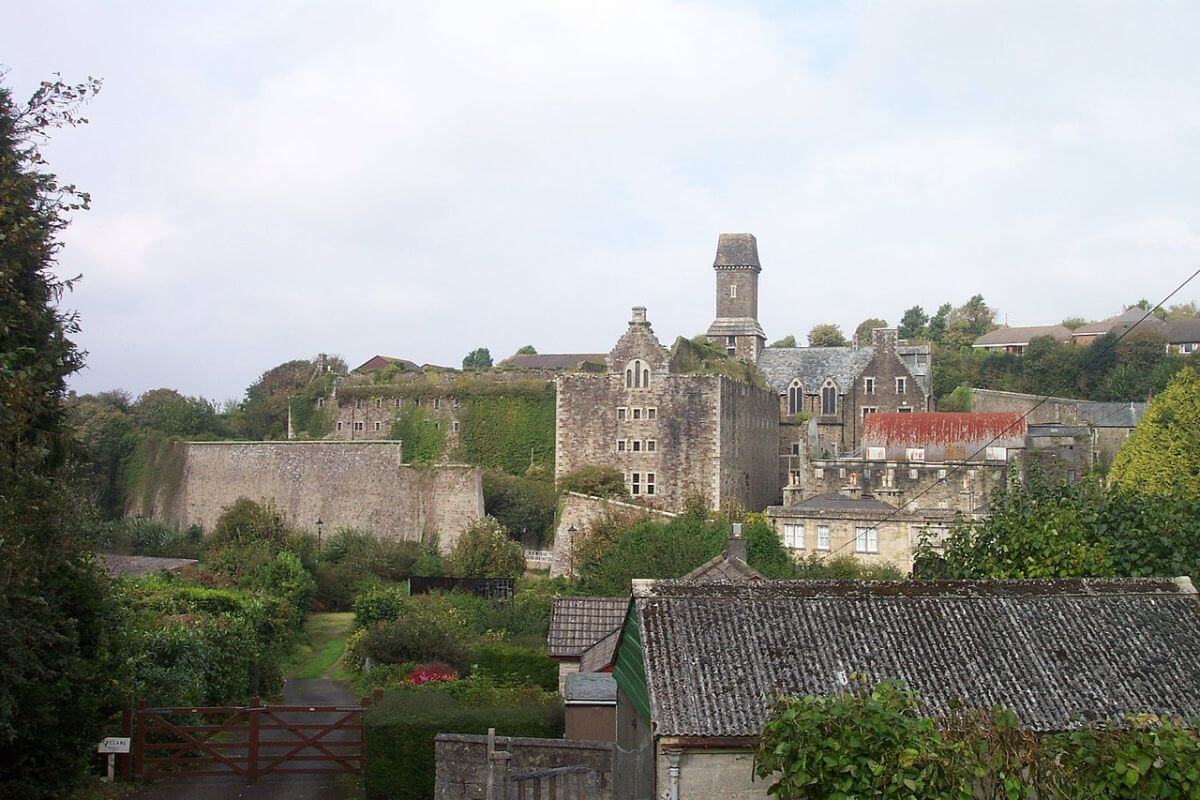
When it comes to historical landmarks, the best things to see in Bodmin include Bodmin Jail, St Petroc’s Church and the Victorian-era Lanhydrock Estate. You can learn about Bodmin’s heritage by visiting the Bodmin Town Museum and the Bodmin Keep – Cornwall’s Army Museum. Or, hop aboard a steam train at the Bodmin & Wenford Steam Railway.
If you want to explore Bodmin’s scenic surrounds, hike or cycle along the 17-mile-long Camel Trail. Afterwards, make the most of the town’s food scene by ordering from the Hole In The Wall restaurant.
Fancy staying in this idyllic town? The Lanhydrock Hotel and Golf Club, Westberry Hotel & Hội-An Restaurant and St Benets Abbey are just a few of Bodmin’s top accommodation options.
7. Whitby, North Yorkshire
Located in North Yorkshire, Whitby is a popular seaside town that is famous for its maritime and mineral heritage – plus its delicious smoked kippers. It’s one of the most popular towns in England to visit in Yorkshire.
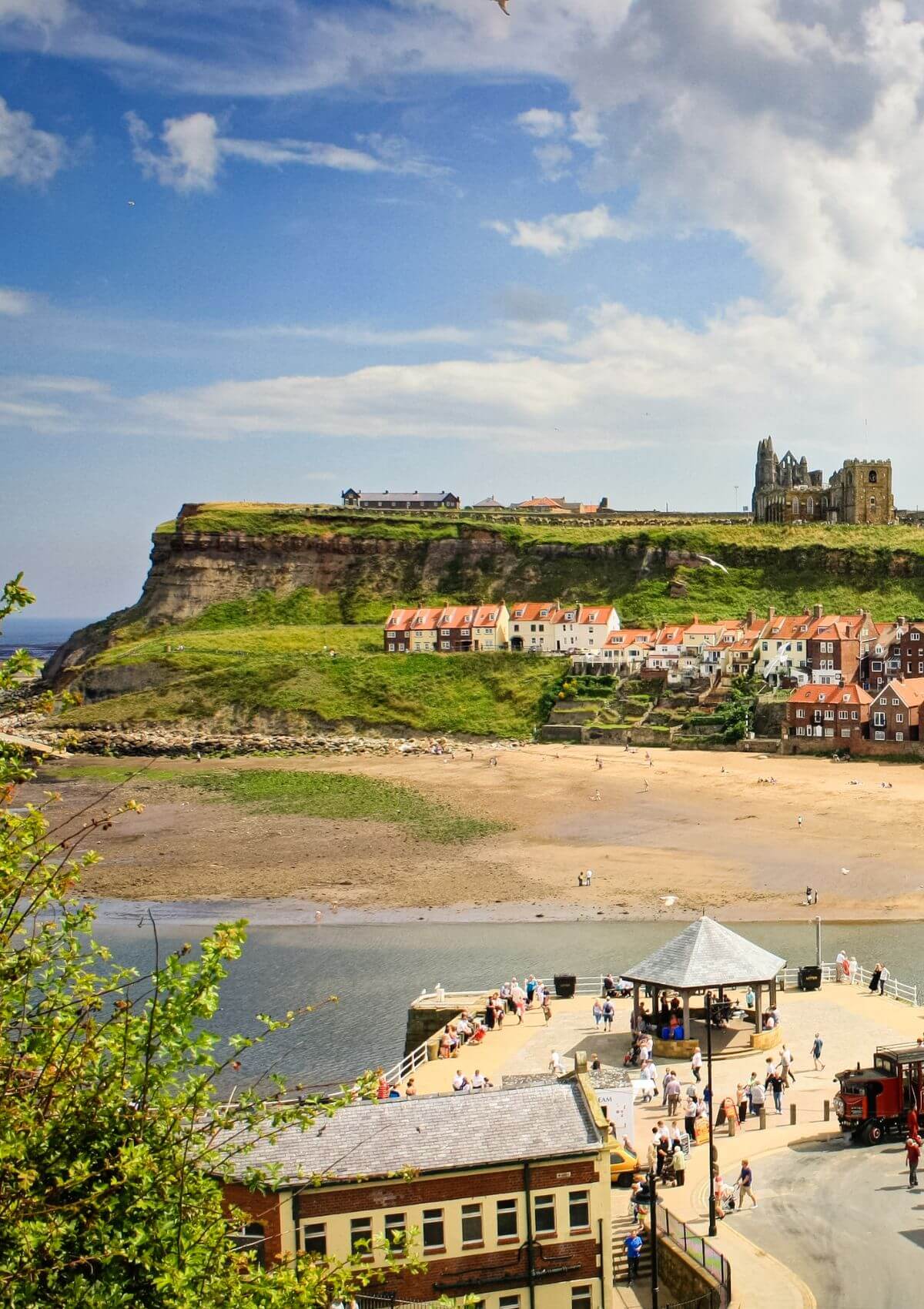
Whitby established itself as a tourism destination during the Georgian period, but the industry really took following the construction of the railway in 1839.
The best-known attractions in Whitby include the Captain Cook Memorial Museum and the ruins of the 7th-century Whitby Abbey, which overlooks the North Sea from the town’s East Cliff. You can take in views of the abbey backdropped by the ocean by following the Circular Walk from Saltwick Bay.
You’ll find plenty of cafés and restaurants near the pier. One of our favourites is the Magpie Café, which is a local go-to for yummy fish and chips.
8. Richmond, North Yorkshire
One of the most beautiful towns in the UK is Richmond, located in North Yorkshire on the doorstep of the glorious Yorkshire Dales. While walking trails are the main draw of Richmond, the town also boasts historic ruins, heritage museums and country gardens.
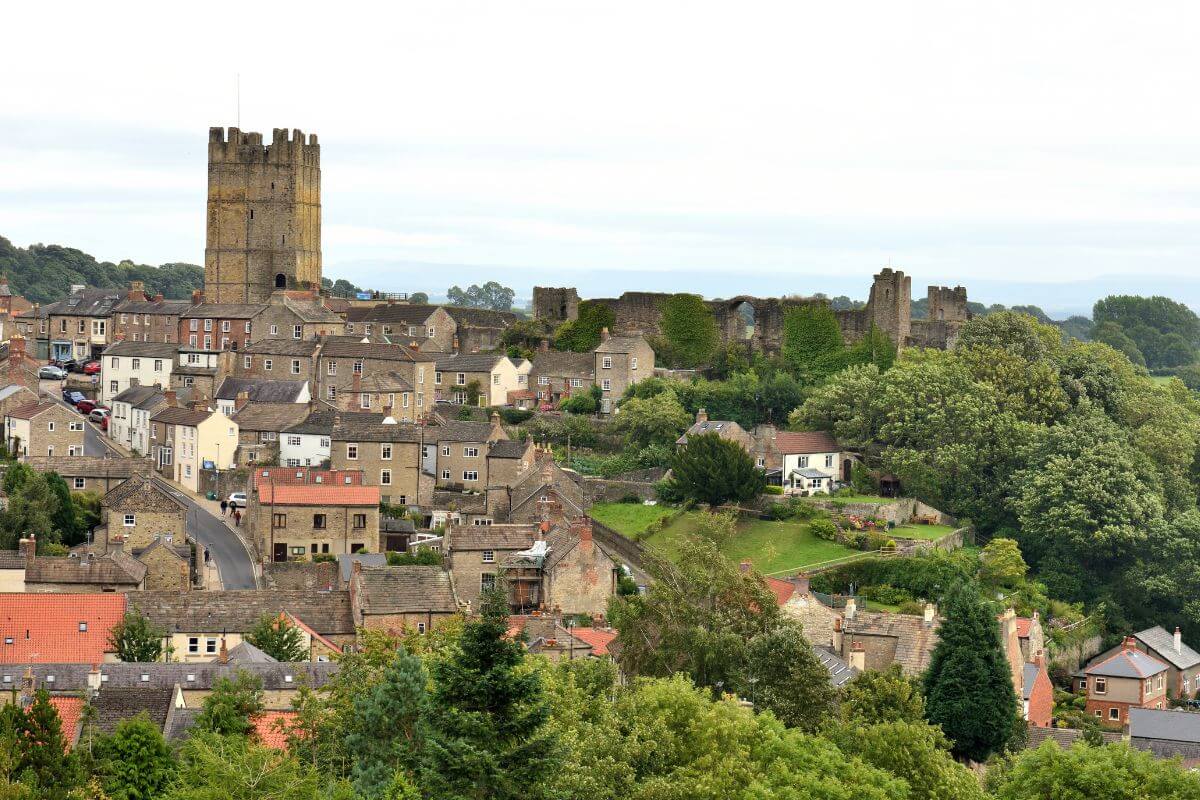
Some of Richmond’s most famous historical attractions include the Norman ruins of Richmond Castle and the nearby Easby Abbey, which is considered to be one of England’s best-preserved monasteries. If you want to learn about Richmond’s heritage, explore the Richmondshire Museum or The Green Howards Museum.
While you’re in the area, you might want to check out the manicured gardens of Kiplin Hall. For a bit of evening culture during your stay in Richmond, consider catching a performance at the Georgian Theatre Royal.
9. Knaresborough, North Yorkshire
Perched on the hills above the River Nidd, Knaresborough is a historic market town in England characterised by its medieval streets, stone staircases and railway viaduct that crosses the river.
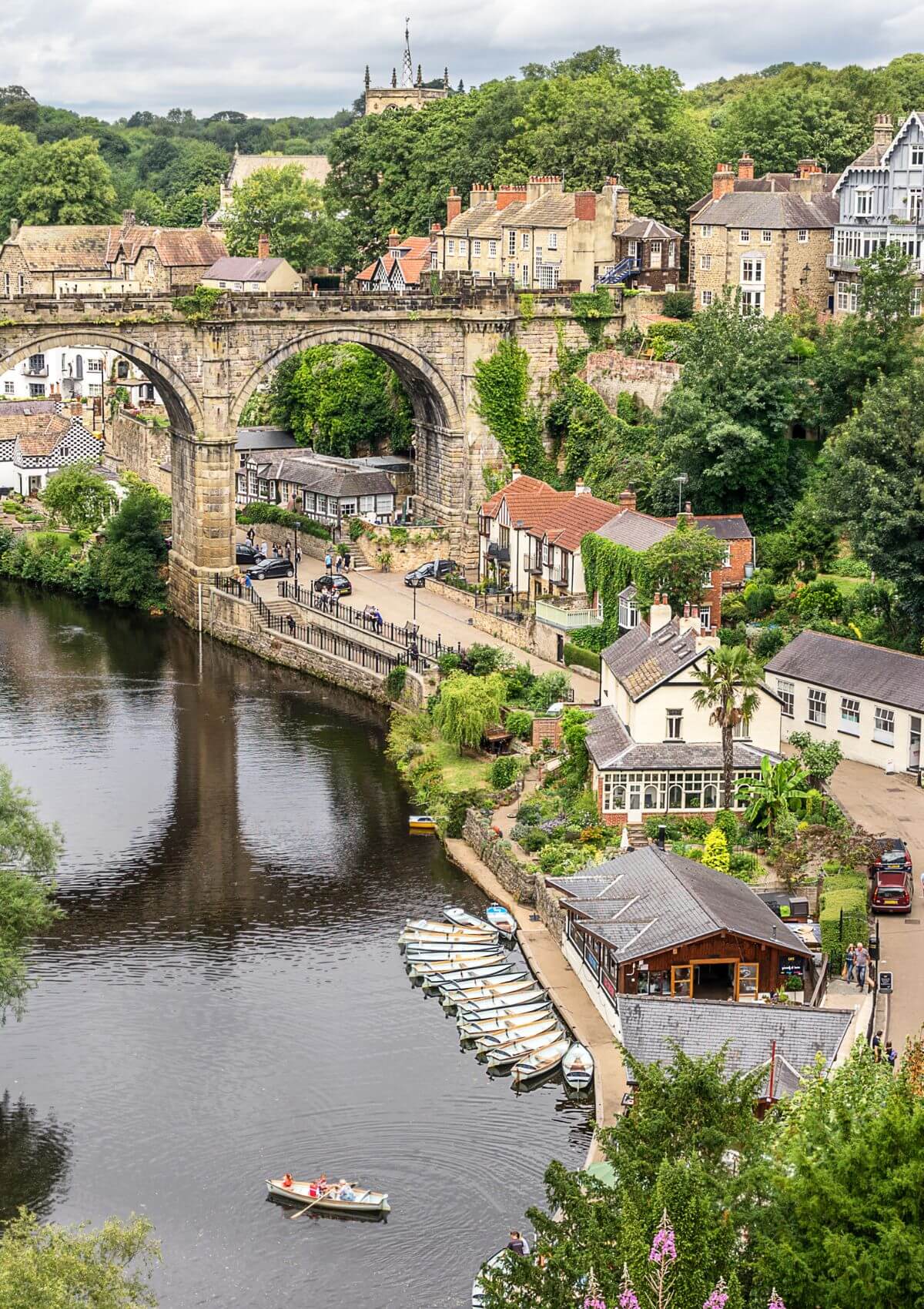
Besides the ruins of the 14th-century Knaresborough Castle and Courthouse Museum, Knaresborough’s best attractions include Allerton Castle, the Bebra Gardens and the historic Chapel of Our Lady of the Crag. You can also explore mysterious hideaways such as Mother Shipton’s Cave and Saint Robert’s Cave.
Every Wednesday, locals and visitors flock to Knaresborough’s weekly market to shop for whole foods, local produce, plants and flowers. When you want to get out into nature, explore the Horseshoe Field or the Stavely Nature Reserve.
READ MORE: Where to Stay in Yorkshire
10. Poole, Dorset
Poole is a seaside town in Dorset that’s known for its sandy beaches, natural harbour and Georgian architecture. Inhabited since before the Iron Age, Poole has been an important port for civilisations including the Romans, and it’s widely considered to be one of the best towns in England today.

You can learn about Poole’s history at the Poole Museum, which occupies four historic buildings including the medieval Scalpen’s Court. If you’re more interested in nature than history, take a boat from Poole Harbour to Brownsea Island, where hiking, wildlife watching and sightseeing are popular activities.
11. Fordwich, Kent
In Kent, you’ll find many of the prettiest towns in England, and Fordwich is one of our faves. While Fordwich in Kent has existed for at least 1,000 years (as mentioned in the Domesday Book), it experienced significant growth during the Middle Ages as a river port. In fact, the Normans rebuilt Canterbury Cathedral using Caen stone shipped from Fordwich.
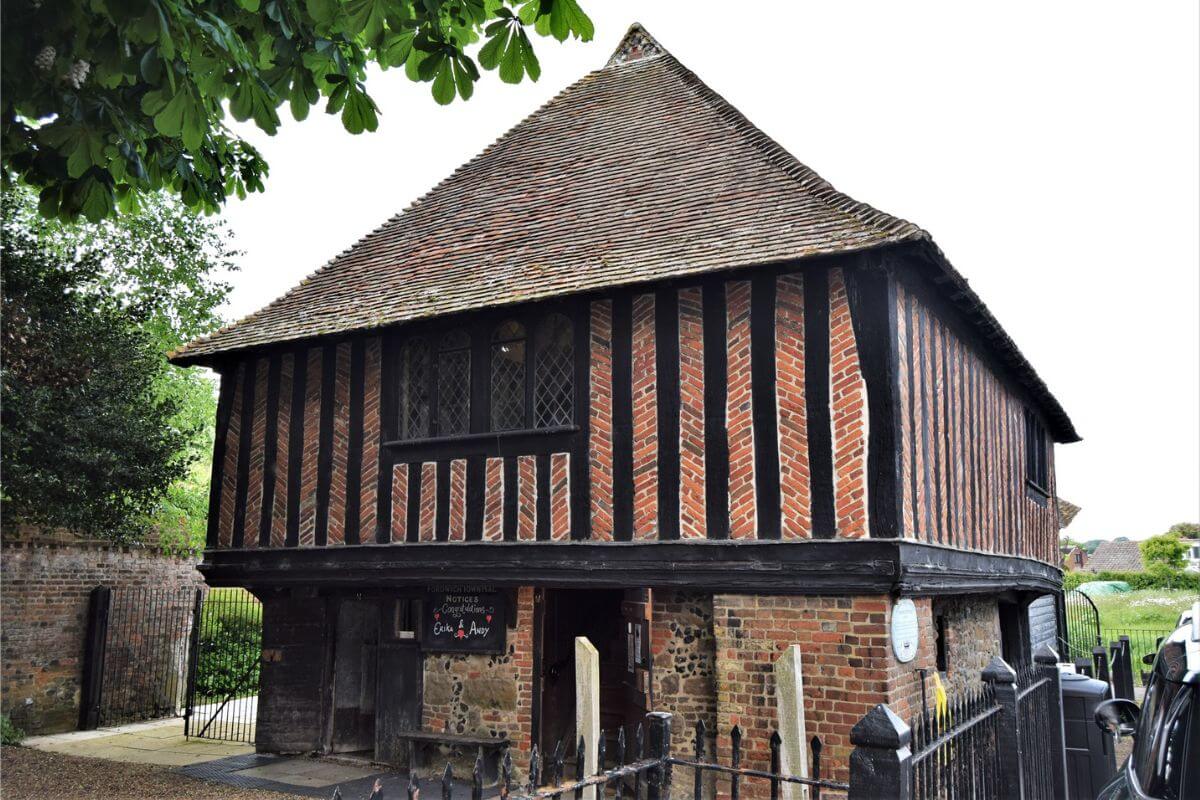
Today, Fordwich is home to an abundance of centuries-old buildings. Some of the town’s most notable historical landmarks include the Tudor-era Fordwich Town Hall and the neighbouring Watergate House. There’s also the Norman-era Church of St Mary the Virgin.
Natural attractions near Fordwich include the Stodmarsh National Nature Reserve and the Blean Woods National Nature Reserve. Sandy stretches such as Tankerton Beach and Herne Bay are less than seven miles away.
They may lack in size, but the small towns in England have a lot to offer.
12. Bridgwater, Somerset
Though records indicate that Bridgwater has existed since the days of the Anglo-Saxons, the town’s importance as a port grew significantly during the Middle Ages. During the 19th century, when Bridgwater’s dock was constructed, the local tourism industry boomed.
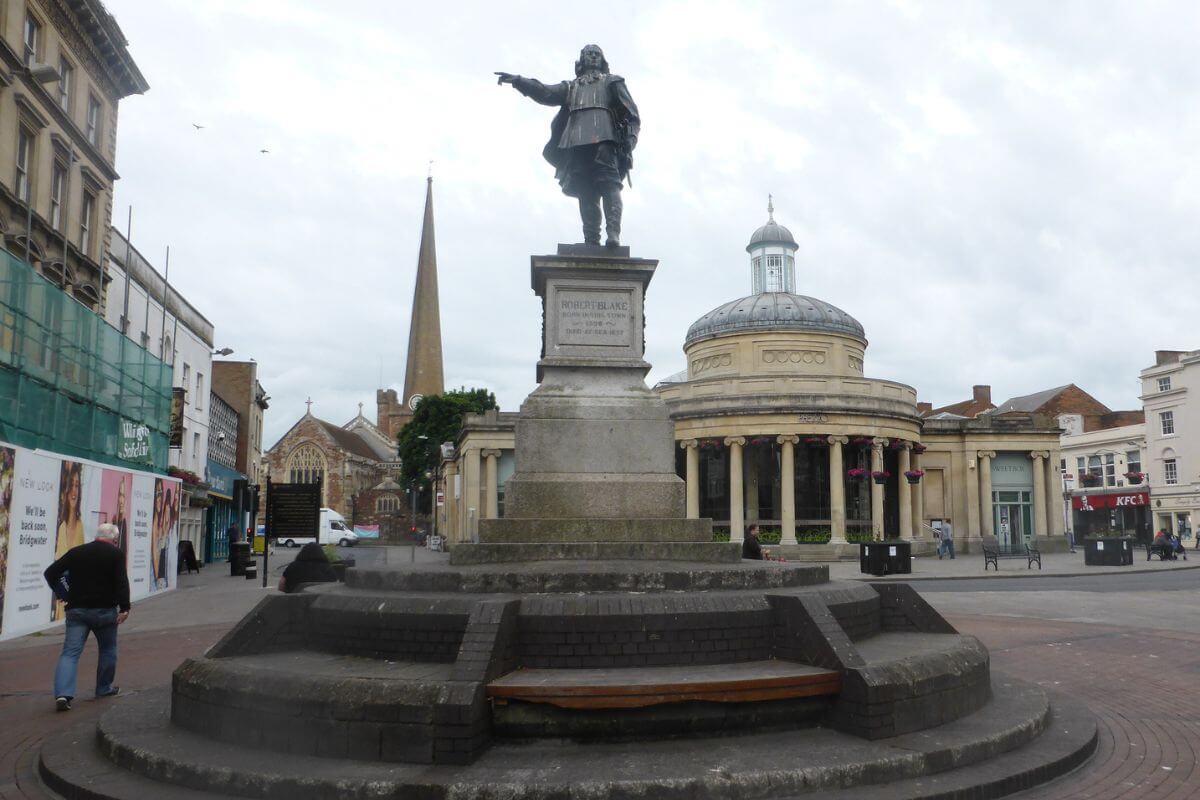
Today, Bridgwater is most famous for hosting the Bridgwater Carnival every November, when one of Europe’s largest illuminated festivals takes over the town’s streets. You can learn about Bridgwater’s heritage as a port and market town at the Blake Museum. It’s one of the most interesting towns in Somerset.
During Bridgwater’s commercial heyday, architectural masterpieces popped up in areas such as King Square, Castle Street and Cornhill. If you want to explore natural settings just beyond the town’s borders, take a stroll along the Bridgwater & Taunton Canal or through the WWT Steart Marshes. You’ll soon understand why we think Bridgwater is one of the best towns in England.
13. Tintagel, Cornwall
Situated on the Atlantic coast of Cornwall, Tintagel is a popular getaway with history buffs and fans of Arthurian legends. The 13th-century ruins of Tintagel Castle are strongly associated with King Arthur, though it’s believed that the site was initially inhabited by the Romans.
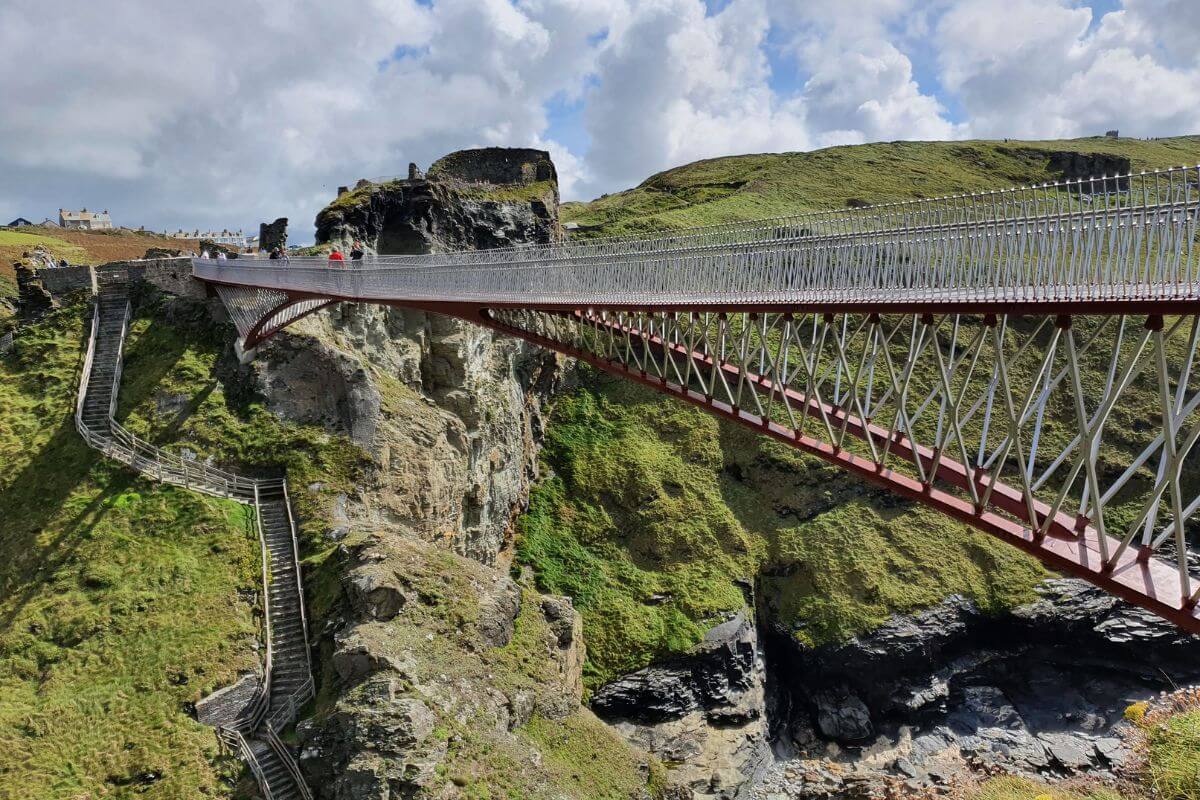
Besides the castle, some of the top Arthurian attractions in the English countryside town of Tintagel include King Arthurs Great Halls, Saint Materiana’s Church and Merlin’s Cave. You might also want to check out the historic Post Office, which occupies a 14th-century National Trust cottage with Victorian touches.
When you want to make the most of the outdoors in Tintagel, we recommend exploring the Rocky Valley and Saint Nectan’s Glen. Tintagel Haven is home to a small beach lapped by turquoise waters, overlooked by Tintagel Castle on the cliffs above. Tintagel Castle makes for a really interesting day out in Cornwall.
14. Penzance, Cornwall
If you’re looking for quaint towns in England by the sea, head over to Penzance, which is known for its winding streets, subtropical gardens and dazzling views of Mount’s Bay from the promenade. The town also boasts a thriving local arts scene and a rich history.
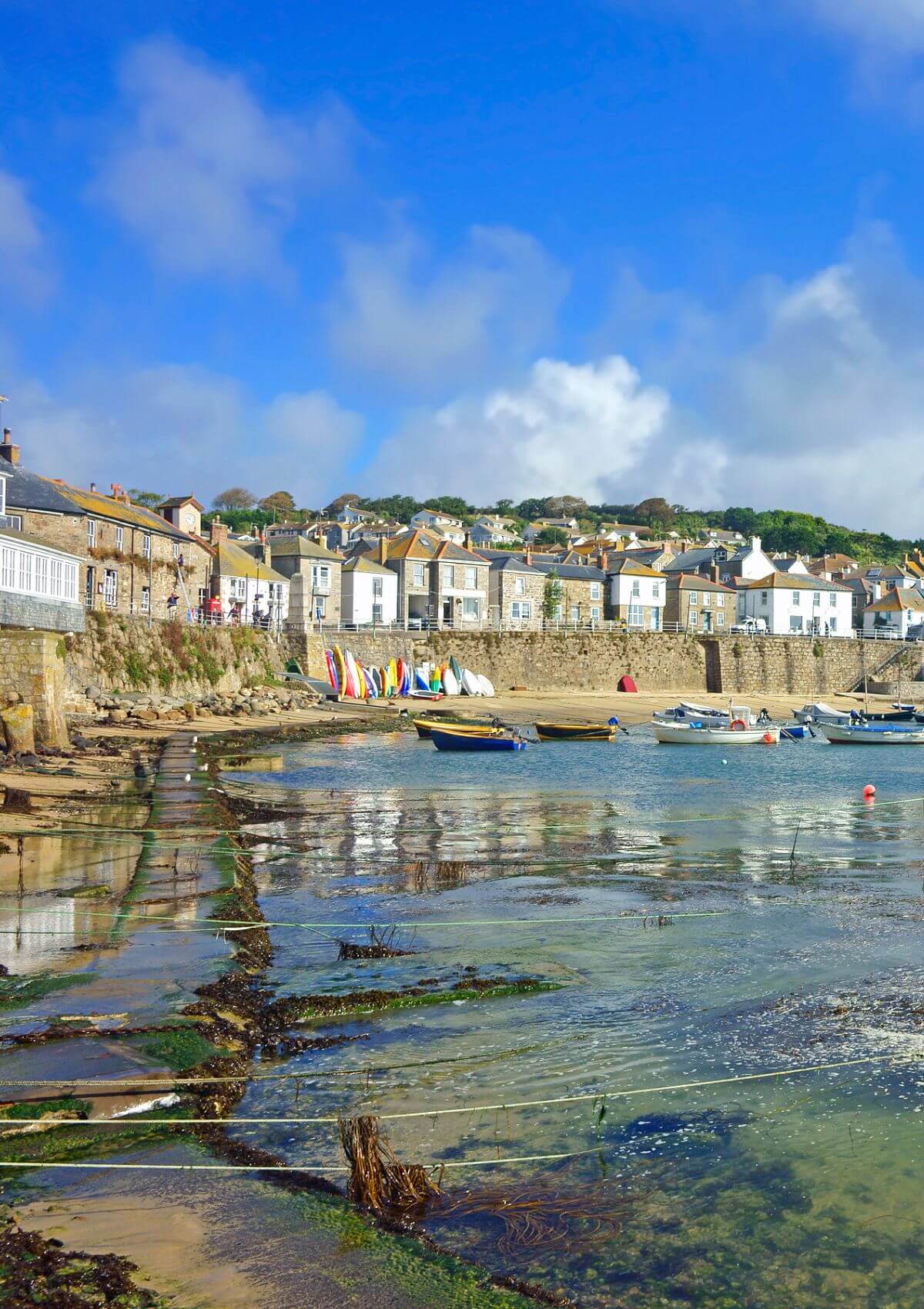
While archeological evidence suggests that Penzance has been inhabited since the Stone Age, the town’s popularity grew rapidly from the 15th century, when it was granted a royal market and the right to charge harbour dues. Today, you can observe boats and yachts docked in the harbour from the promenade and many of the town’s dockside taverns.
Just some of the top attractions in Penzance include The Exchange Gallery, the Penlee House Gallery and Museum, the Tremenheere Sculpture Gardens and the Morrab Gardens. You’ll find an eclectic mix of boutiques, pubs, 18th-century architecture, and landmarks like the Egyptian House on Chapel Street.
While you’re visiting the region, you might want to head to see more of Cornwall’s prettiest villages.
15. Ramsgate, Kent
Throughout the 19th century, Ramsgate was considered to be one of England’s great seaside towns. In the modern era, Ramsgate is still home to the nation’s only Royal Harbour, which borders a yacht-packed marina.
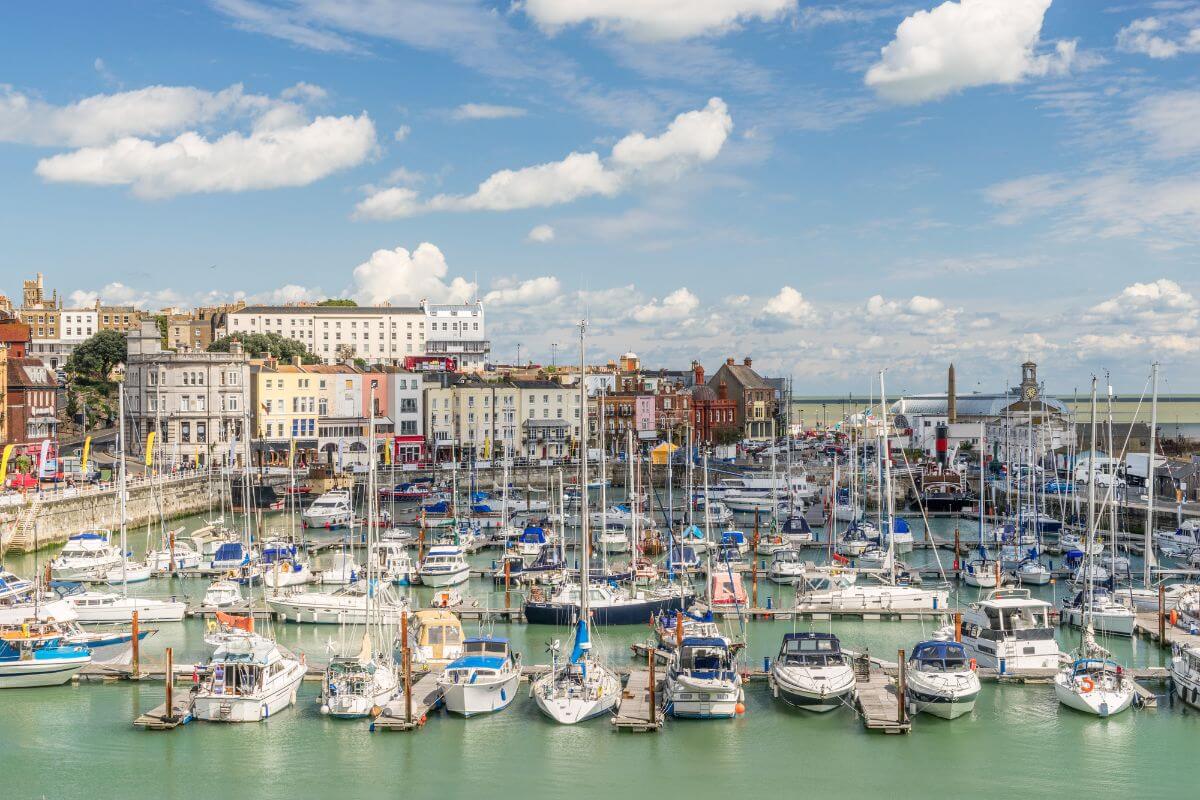
Some of the best natural attractions in Ramsgate include the Pegwell Bay nature reserve, the Monkton Nature Reserve and the wide sandy strip at Ramsgate Main Sands. For a look into the town’s history, visit the Ramsgate Maritime Museum, the Minster Abbey and the Ramsgate Tunnels, where you can explore an underground network of tunnels constructed during WWII.
Ramsgate is one of three famous Victorian and Georgian resorts in Kent. You can catch a glimpse of each resort by walking along the Viking Coastal Trail, which allows you to see three of the best towns in the UK in one day.
16. Lowestoft, Suffolk
As England’s most easterly coastal town, Lowestoft is an amazing place to catch the sunrise above the North Sea. On top of postcard-perfect views and beaches, Lowestoft is famous for being a historic fishing port and the birthplace of composer Benjamin Britten.

Family attractions in Lowestoft include the Royal Plain Fountains, Victorian seaside gardens and the Blue Flag beaches to the north and south of Claremont Pier. When you need to take a load off your feet, you can choose from over 50 teas at the Flying Fifteens – or hop aboard a donkey for a jaunt along the sandy strip.
After a day of sunbathing, sightseeing and exploring the Lowestoft Maritime Museum, you can end the night with a performance at the long-established Marina Theatre.
17. Burford, Oxfordshire
Known as ‘the gateway to the Cotswolds’, Burford in Oxfordshire is famous for its sloped High Street that’s brimming with stone houses complete with Georgian and Tudor façades. The town originated as an Anglo-Saxon fort before becoming an important industrial centre and crossroads for the region.
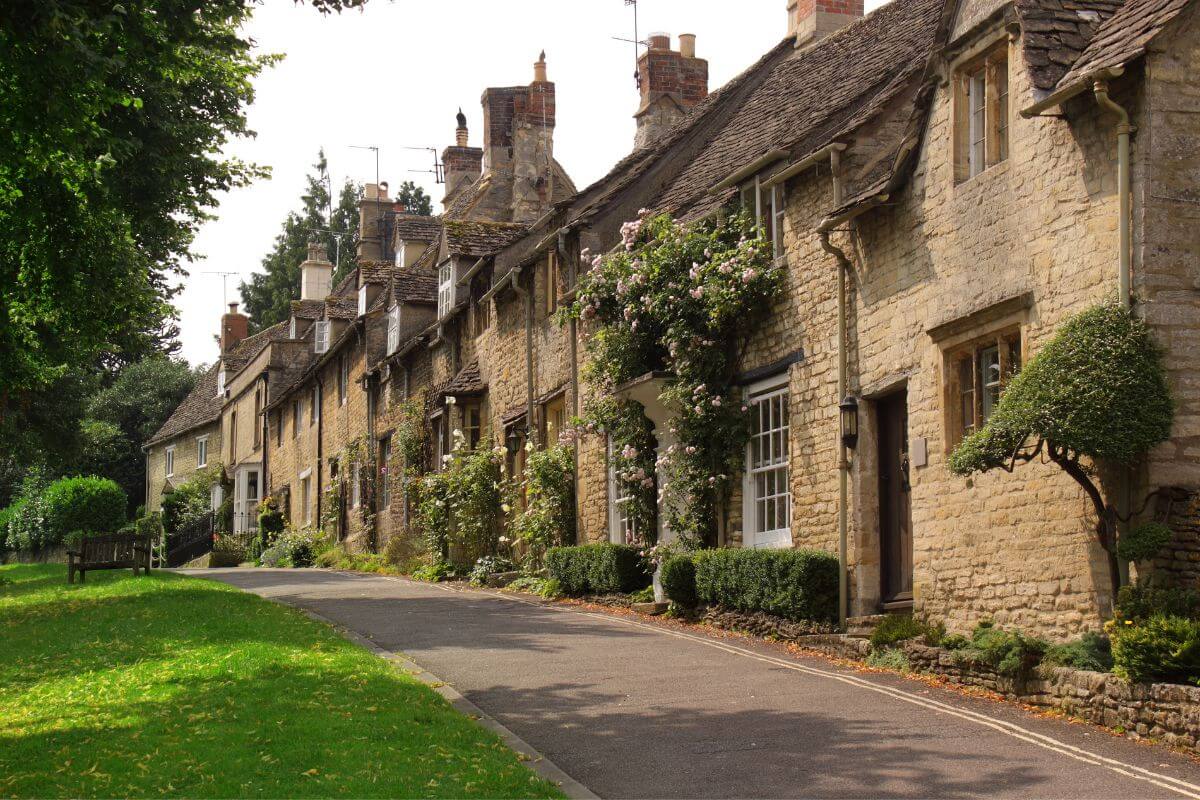
You can gain an insight into Burford’s social and industrial heritage by browsing the Tolsey Museum, which occupies the Tudor-era Tolsey building. Or, you can simply roam through the town’s winding streets and alleyways to admire the historical architecture.
The most famous event in Burford is Levellers’ Day, which brings a colourful procession to the town every May in the name of religious tolerance and civil rights. Top Burford attractions include the Saint John the Baptist church, The Great House and the quaint Burford Library.
Looking for more towns and top attractions near Burford? Find out about 15 unique family days out in Oxfordshire.
18. Tewkesbury, Gloucestershire
Tewkesbury is a historic market town in England, in Gloucestershire, that’s renowned for its 400 or so listed buildings and medieval townscape of half-timbered black and white houses. In the past, Tewkesbury played a major role in the War of the Roses. Today, the town’s riverside attractions, historical landmarks, museums and festivals attract visitors year-round.
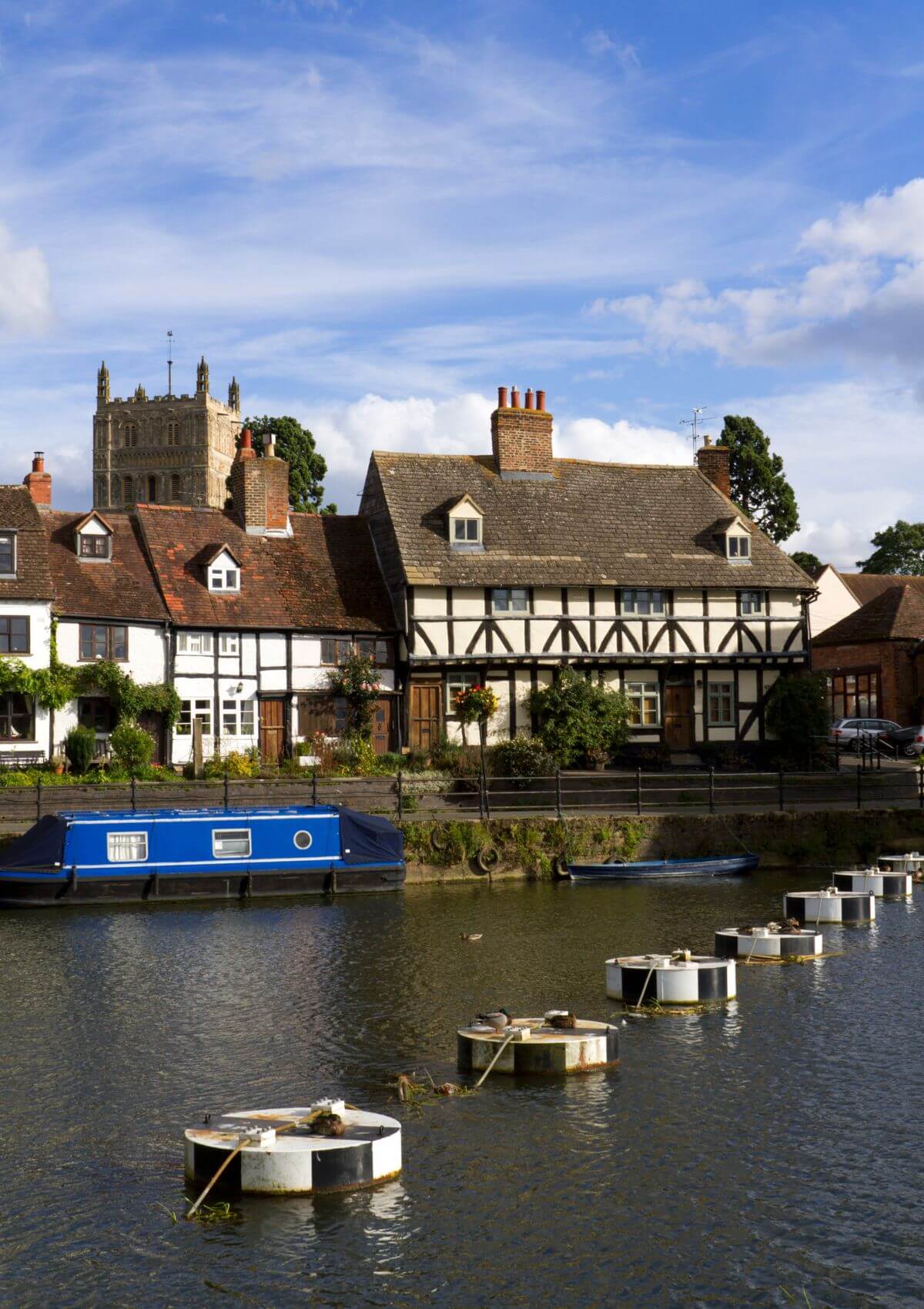
The most famous landmark in Tewkesbury is Tewkesbury Abbey, which has dominated the skyline for over 900 years. You might also want to visit the Anglo-Saxon Odda’s Chapel and the Old Baptist Chapel, whose origins remain a mystery.
Every year in July, re-enacted battles take place in the town’s southern fields during the Tewkesbury Medieval Festival. You can learn more about Tewkesbury’s fascinating history at the Heritage & Visitor Centre, the Tewkesbury Museum and the John Moore Countryside Museum.
19. Dover, Kent
Dover is one of the most famous towns in the UK. The role of Dover in England and the United Kingdom’s history cannot be overstated. The iconic White Cliffs of Dover acted as natural safeguards against European invasions for millennia. When the Normans successfully conquered England in 1066, Dover Castle was built atop the cliffs to repel further attempts.

Within the grounds of Dover Castle, you’ll find famous Dover attractions including the 12th-century Great Tower and the Secret Wartime Tunnels. The Samphire Hoe nature preserve sits at the foot of Shakespeare Cliff. For the best views over the English Channel, walk along the cliffs to the Victorian-era National Trust South Foreland Lighthouse.
20. Bamburgh, Northumberland
Situated within the Northumberland Coast Area of Outstanding Natural Beauty, Bamburgh is famous for its Anglo-Saxon ruins, Blue Flag beach and the incredible Bamburgh Castle.
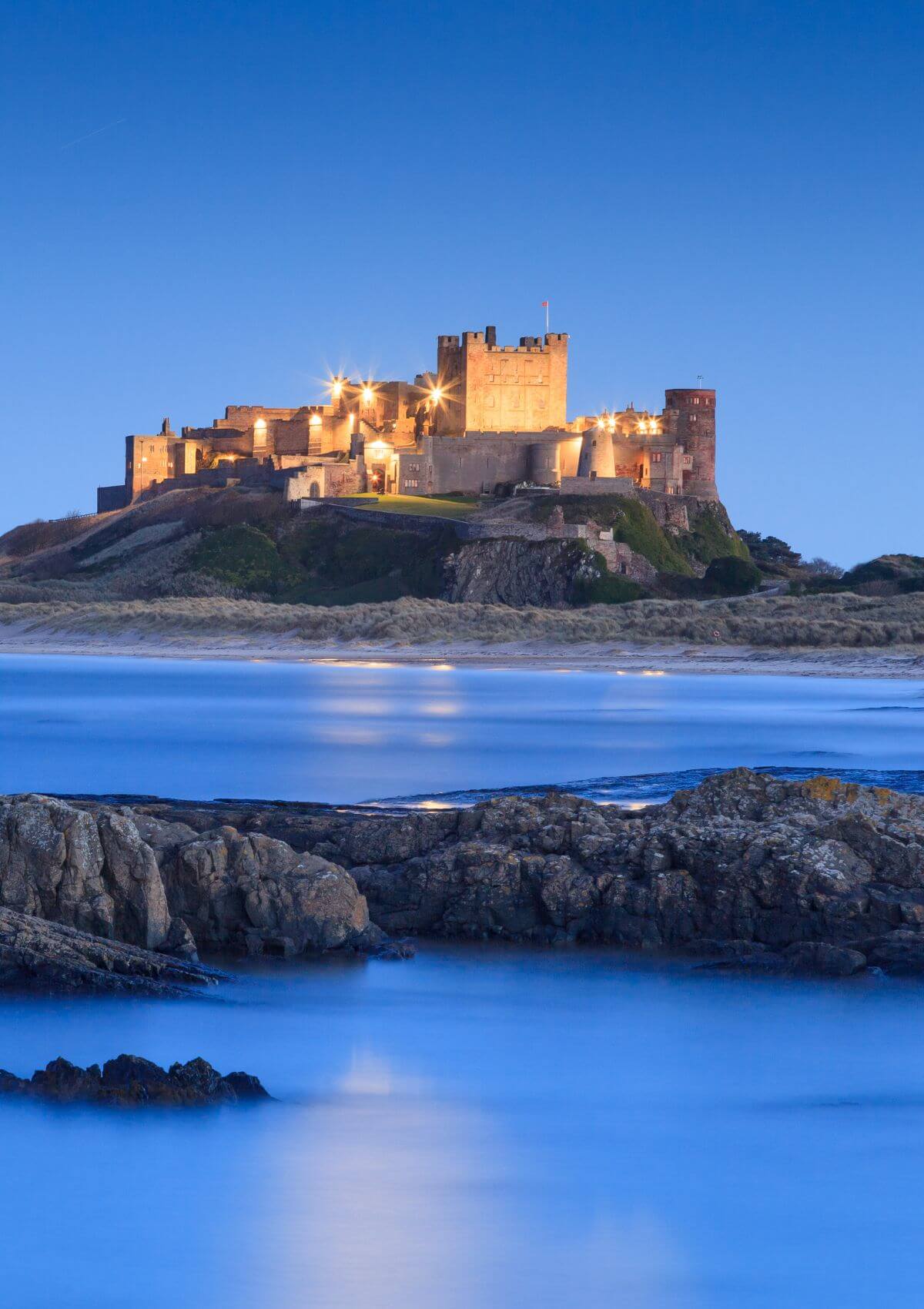
Built on the site of a Celtic Briton fort, Bamburgh Castle was constructed by the Anglo-Saxons to house the Kings of Northumbria. You may have seen it featured on TV’s The Last Kingdom.
While Bamburgh Castle is undoubtedly the town’s highlight, other top Bamburgh attractions include the RNLI Grace Darling Museum, Bamburgh Beach and the Bamburgh Dunes Site of Special Scientific Interest.
Bamburgh is undoubtedly one of the most interesting towns in England. For more ideas on what to nearby, check out the 11 best family days out in Northumberland. And if you’re visiting in the festive season, check out these great Christmas days out in Northumberland too.
21. Rye, East Sussex
Rye is one of two ‘Ancient Townes’ in East Sussex characterised by narrow cobbled streets lined with medieval half-timbered houses. Located just two miles from the sea, Rye played a crucial defensive role following the Norman Conquest, though it was an important commercial centre as far back as the Roman era.

Many examples of medieval architecture remain standing in Rye. Tudor-era hotels that are still in use like The Old Bell Inn and The Mermaid Inn were once used as hideaways by the notorious Hawkhurst Gang.
For a glimpse into the town’s history, visit the Rye Heritage Centre or the Rye Castle Museum, which is situated inside a 13th-century fortress. You can learn about the life and work of the late author Henry James at the National Trust Lamb House.
In addition to historical landmarks, Rye is on the doorstep of ecotourism destinations including the Rye Harbour Nature Reserve and the High Weald Area of Outstanding Natural Beauty. Visiting Rye is definitely one of the best days out in East Sussex. And as far as English countryside towns go, Rye is hard to beat.
22. Chelmsford, Essex
Chelmsford is the historic county town of Essex and is – somewhat confusingly – located within the City of Chelmsford district. It’s considered to be the county’s oldest town, having prospered as a settlement during the Roman occupation of Britain. The modern town’s origins date back to 1199 CE, when it was granted a royal charter to hold a market – it’s been one of the best towns to visit in the UK ever since.

The most famous historical landmarks in Chelmsford include Chelmsford Cathedral, the neoclassical Hylands House and the 18th-century Shire Hall. You might also want to check out the Victorian railway viaduct that crosses the River Can in Central Park. Browse the displays of art and industrial artefacts at Chelmsford Museum to learn about the town’s rich heritage.
For a spot of shopping while visiting Chelmsford, discover the diverse mix of boutiques and chain stores on the High Street. You can also stock up on clothing through to homewares at three shopping centres. When you want to fill up on classic English grub, grab a table at the 18th-century Old Windmill pub.
After discovering the sights of Chelmsford, explore some of the top family attractions in Essex.
23. Shaftesbury, Dorset
Located on a hilltop in Dorset, Shaftesbury is most famous for the cobblestones and cottages of Gold Hill, which was immortalised in a Hovis advert during the 70s.
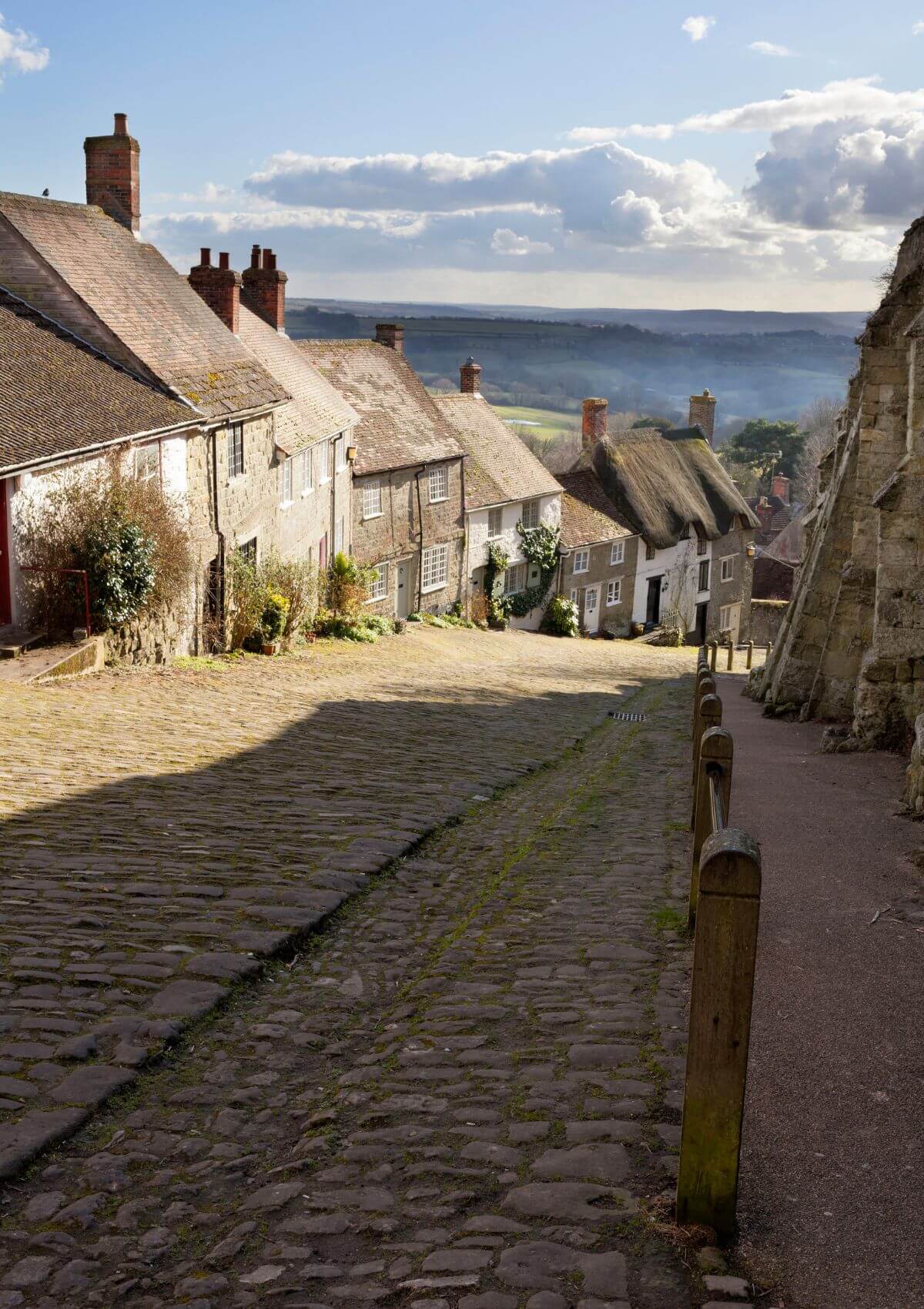
While Shaftesbury has been influential since the days of Roman Brittania, it became one of England’s richest religious establishments when King Alfred ordered the construction of Shaftesbury Abbey in the year 888.
Unfortunately, the abbey was destroyed under Henry VIII during the 16th century, but a venerable stone wall from the original abbey remains standing on Gold Hill. Visit the Shaftesbury Abbey, Museum and Garden Trust for more insights into the town’s Anglo-Saxon and medieval past.
In addition to being a mecca for history buffs, Shaftesbury is a nature-lovers paradise. Scenic overlooks offer panoramic views of Blackmore Vale and the Cranborne Chase Area of Outstanding Natural Beauty. You’ll see most of Shaftesbury’s historical and natural highlights by following the Shaftesbury Heritage Trail. It’s a really interesting town in England to visit.
24. Colchester, Essex
Located in Essex, Colchester is considered to be one of Britain’s oldest continuously inhabited settlements. Nearly 2,000 years ago, Colchester – then named Camulodunum – was the first capital of Roman Brittania. It continued to play a prominent role in England’s history during the days of the Anglo-Saxons and the Normans.

You’ll find many relics and ruins from bygone eras throughout Colchester. The town’s most famous landmark is Colchester Castle, which is Europe’s largest Norman keep of its kind. The castle now hosts a museum of Romano-British antiquities. To travel back further in time, visit the Balkerne Gate, which is England’s largest surviving Roman gateway.
On top of historical landmarks, Colchester is home to cultural attractions including Colchester Zoo (one of the best zoos in England) and the Highwoods Country Park. There are also galleries such as Firstside and performance venues like the Colchester Arts Centre. You’ll find plenty of shops, hotels and restaurants in the town centre.
25. Margate, Kent
Margate has been one of England’s most popular seaside resorts for over 250 years, particularly since the introduction of the railway during the 18th century. Because Margate has been a major port since the Middle Ages, it’s one of the best towns in England for history buffs and sunseekers alike.
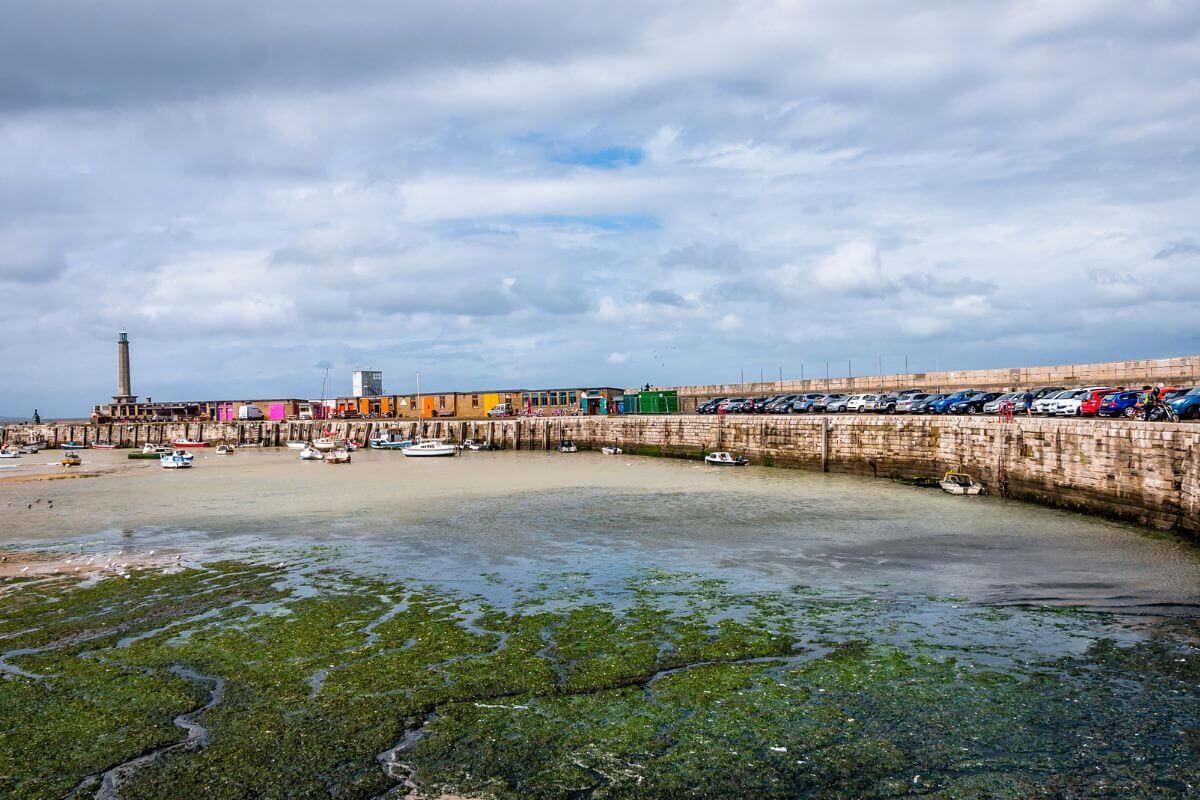
Besides its wide sandy beach – which is home to shore-side rides, seafood stalls and fish and chip shops – Margate’s best attractions include the Turner Contemporary art gallery, the Margate Museum and the Tudor House. It’s also home to the Dreamland Margate amusement park, which boasts over a century of history and is home to a Grade II listed wooden rollercoaster. All in all, they make for a wonderful day out in Kent!
26. Castle Combe, Wiltshire
Located within the Cotswolds Area of Outstanding Natural Beauty, Castle Combe is often named ‘England’s prettiest village’. On top of being one of the prettiest English villages, Castle Combe is a mecca for history lovers. It was once the site of a 12th-century castle that was demolished centuries ago. Today, the village is known for its honey coloured Cotswold stone houses. No new buildings have been constructed in the village’s historic area since the 17th century.
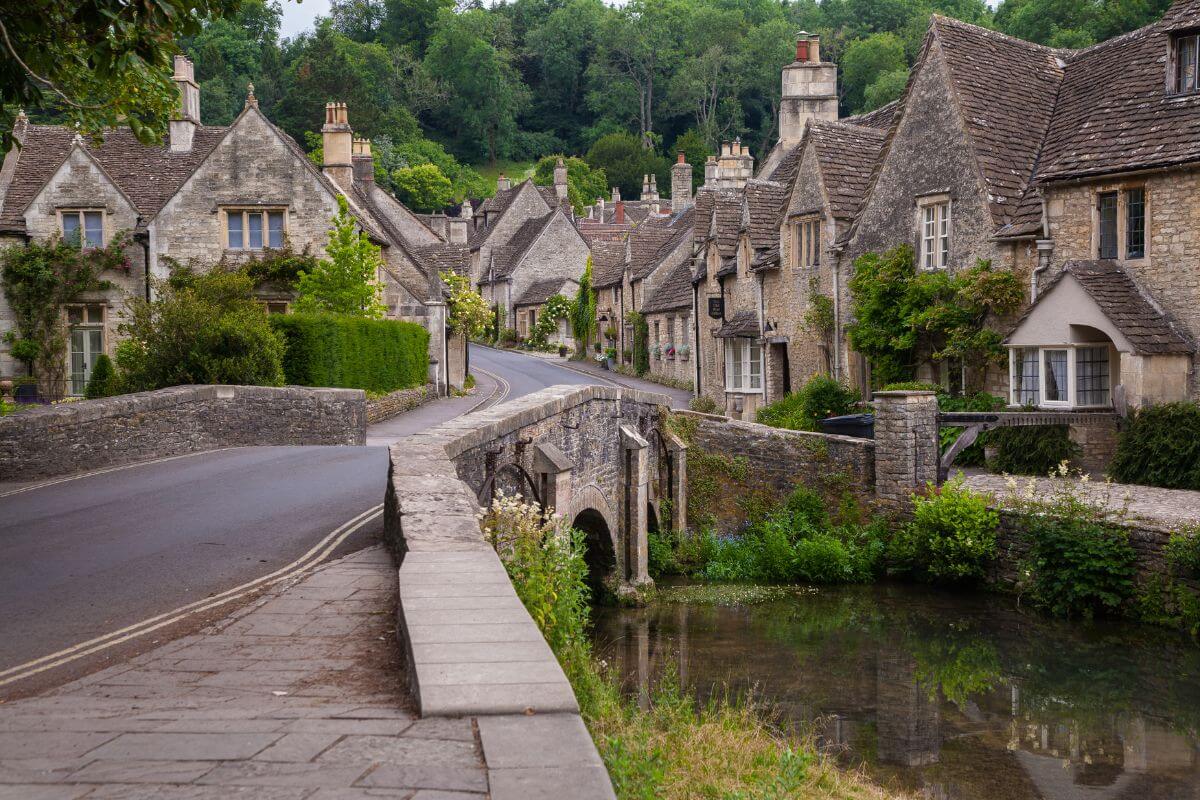
Historical landmarks in Castle Combe include the 14th-century Market Cross, the 14th-century Manor House (now a 5-star hotel) and the 13th-century Saint Andrew’s Church. If you’re more of an adventure-seeker than a history buff, you might enjoy racing cars at the Castle Combe Circuit.
When you’re feeling peckish, you can dine at traditional pubs or purchase homemade desserts from outside the houses of locals in the village’s centre.
After spending the day in Castle Combe, consider heading on one of these days out in Wiltshire.
27. Reading, Berkshire
Founded in the 8th century, Reading became an important trading centre during the Middle Ages, Berkshire’s largest town by 1525, and a major hub of brewing and baking following the Industrial Revolution. Today, Reading is a technology and manufacturing powerhouse, famous for its cuisine, shopping scene, and the annual Reading Festival.

Reading’s most notable historical landmark is the 12th-century Reading Abbey Ruins, which sits next door to the Victorian-era Forbury Gardens. When it comes to shopping, you have the choice of three shopping centres and a pedestrianised high street. With regards to gastronomy, you’ll find everything from street food stalls to fine diners in the town centre.
Other famous landmarks in Reading include the Reading Museum, The Museum of English Rural Life, Beale Wildlife Park, and the Hexagon multi-purpose theatre. Whether you’re a shopaholic, history buff or partygoer, Reading is one of the best English towns to visit near London.
28. Southwold, Suffolk
Situated on the Suffolk Heritage Coast, Southwold is a charming seaside town with a rich maritime and fishing heritage. Surrounded by waterways on all sides – including the North Sea that laps its award-winning beach – Southwold is almost an island that’s only accessible by one road.
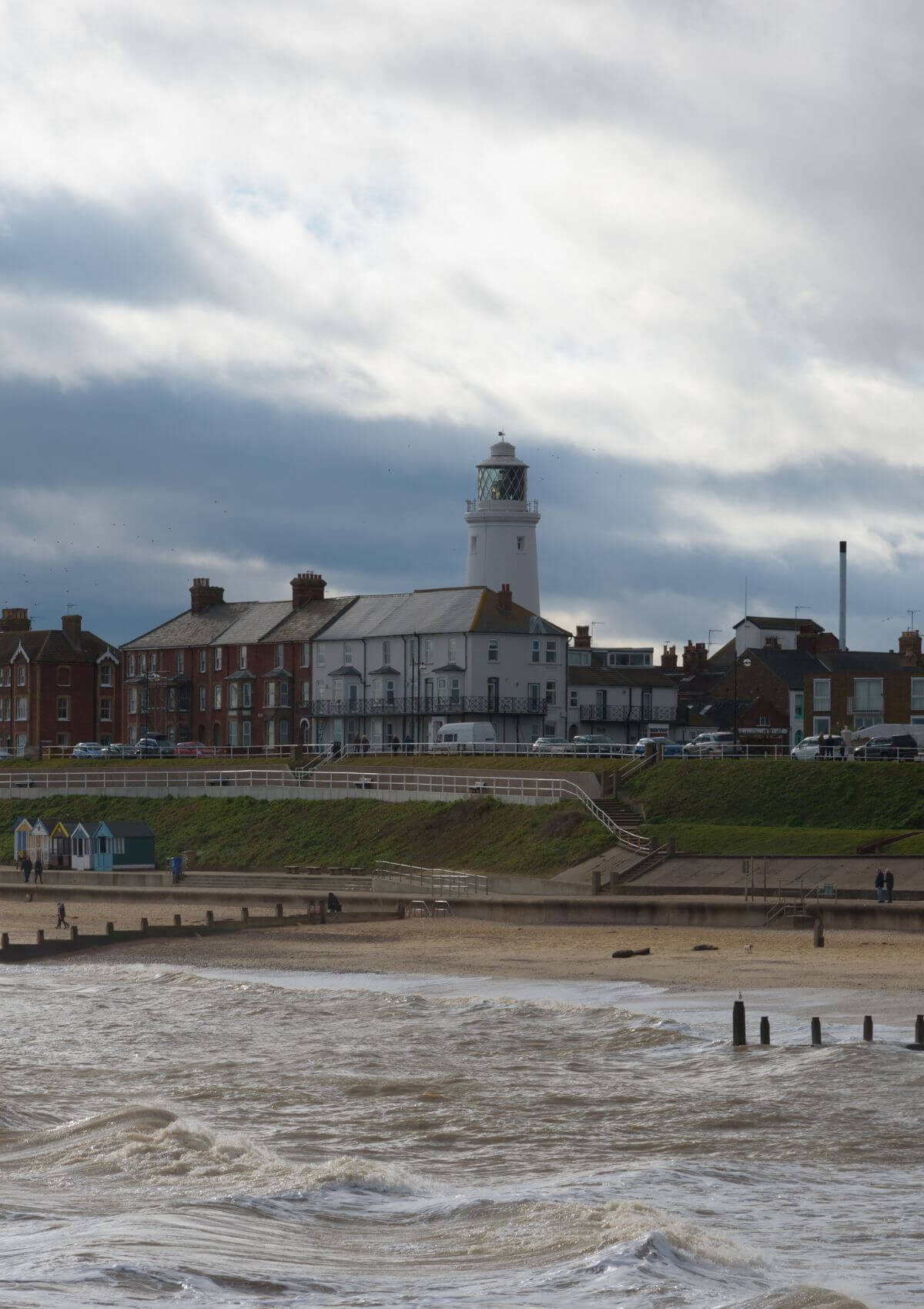
Most tourists visit Southwold to relax on its sandy strip, which is backdropped by a beach hut-laden promenade. For a glimpse into the town’s history, visit the Southwold Sailors’ Reading Room, which was constructed in 1864 to provide fishermen with a refuge away from the booze-filled pubs.
Besides its beaches and museums, famous attractions in Southwold include the Victorian-era Southwold Pier, the 19th-century Southwold Lighthouse and the Grade I listed Saint Edmund King & Martyr Church. The cannon that sits on the green above the beach commemorates the 17th-century Battle of Sole Bay between England and France.
While Southwold is easily one of the most interesting towns in England, there are plenty more amazing days out in Suffolk to be enjoyed.
Quick list of the most interesting towns in England
- 1. Cheltenham, Gloucestershire
- 2. Bakewell, Derbyshire
- 3. Alnwick, Northumberland
- 4. Ipswich, Suffolk
- 5. Barnstaple, Devon
- 6. Bodmin, Cornwall
- 7. Whitby, North Yorkshire
- 8. Richmond, North Yorkshire
- 9. Knaresborough, North Yorkshire
- 10. Poole, Dorset
- 11. Fordwich, Kent
- 12. Bridgwater, Somerset
- 13. Tintagel, Cornwall
- 14. Penzance, Cornwall
- 15. Ramsgate, Kent
- 16. Lowestoft, Suffolk
- 17. Burford, Oxfordshire
- 18. Tewkesbury, Gloucestershire
- 19. Dover, Kent
- 20. Bamburgh, Northumberland
- 21. Rye, East Sussex
- 22. Chelmsford, Essex
- 23. Shaftesbury, Dorset
- 24. Colchester, Essex
- 25. Margate, Kent
- 26. Castle Combe, Wiltshire
- 27. Reading, Berkshire
- 28. Southwold, Suffolk
- 12 Best Yorkshire Seaside Towns to Visit in 2025 - 23 May 2024
- 15 Most Unique Afternoon Teas in Yorkshire - 18 April 2024
- Best Itinerary for a Day Out in Derby - 17 January 2024





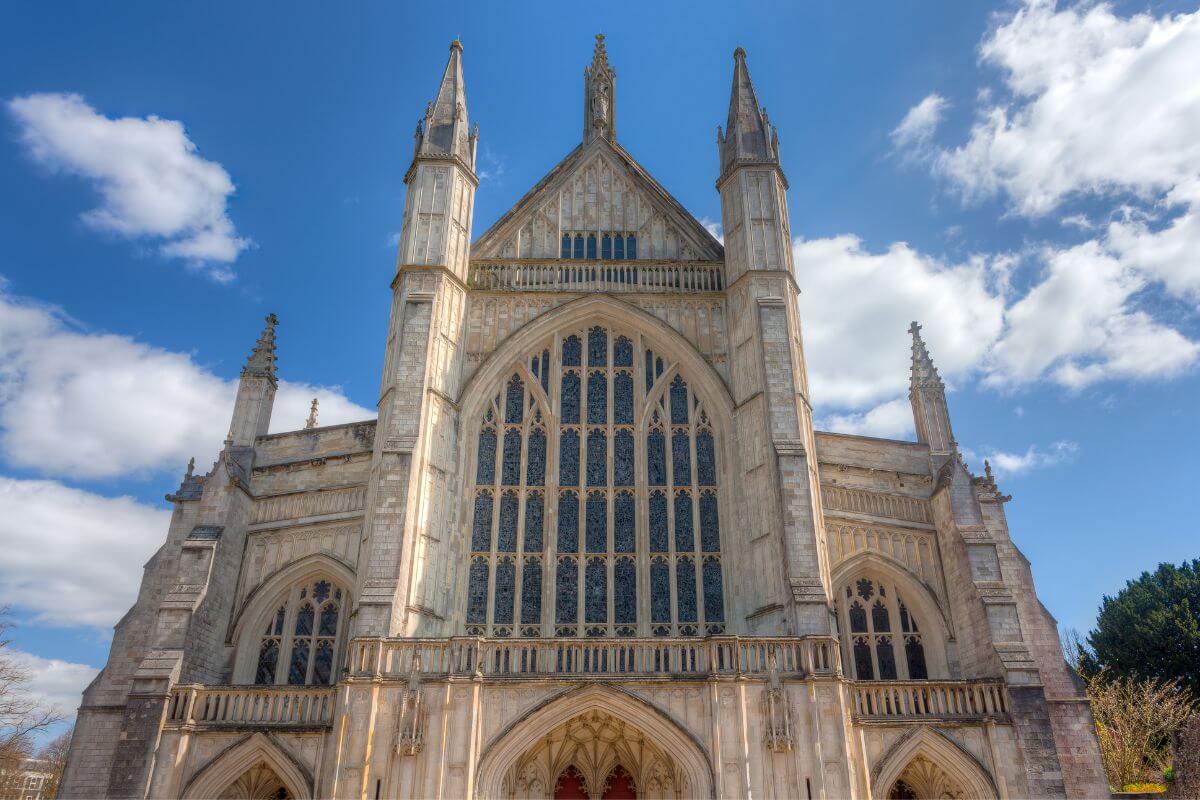

Just read this article. I have been to most of these villages, towns or cities.
I spent a number of years in the UK – I am Canadian- and I wrote a book’ Britain Unravelled: A North American Guide to the UK.’ I edited it in 2021 after spending an additional 6 months in London.
The book can be found at amazon and all major book retailer sites as a hard or soft cover or an ebook.
Please check it out!
Sounds great – hope you had a lovely time while you were here!
You lost me at Reading. Its a dump and not on my list of lovely places to visit. If you recommend Reading then I’d strongly advise taking this list with a big pinch of salt.